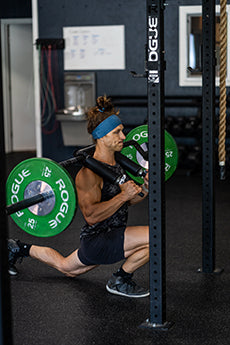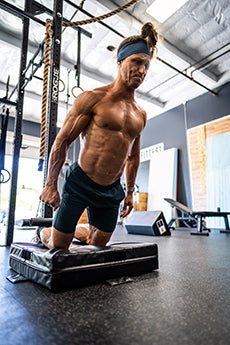A few months ago I stumbled across a YouTube video. Joe Rogan was talking about some guy that called himself the Knees Over Toes Guy. Well, as many of you know, one magical click on YouTube can send you down a rabbit hole of other videos. Before I knew it I was DEEP into Ben Patrick’s social media. If you don’t know Ben yet, the @kneesovertoesguy, then let me be the first to happily introduce you to this world.
BUILD RESILIENT KNEES
5 Movements for Knee Pain – After Leg Day, or During!
I’m going to break down why these 5 movements will have a place in Functional Bodybuilding and my training going forward. I’ll also show you can bring them into your training too with our Persist training program.
1. ATG SPLIT SQUAT – ELIMINATE KNEE PAIN AFTER LEG DAY
Where is this showing up in PERSIST?

2. REVERSE FROM KNEE PAIN
Where is this showing up in PERSIST?
3. TIB RAISES – PREVENT KNEE PAIN
I worked the bodyweight variation for a month and then invested in a Tib Bar from the @homegymguys, allowing for weighted and measurable loading of this movement pattern. Now I own three and pump out some reps every time I see the device sitting there. Maintaining structural balance is so ingrained in my thinking around strength training from the past 5 years since we founded Functional Bodybuilding. Now I am looking at the ankle joint and seeing that I have more to learn about how to balance structures. Never stop learning!
Where is this showing up in PERSIST?

4. NORDIC CURLS

5. VMO (AKA – CYCLIST) SQUATS
Where is this showing up in PERSIST?
NO MORE KNEE PAIN AFTER LEG DAY
And if you want to give training a try with Functional Bodybuilding workouts that are designed to be knee friendly, pick up a copy of Beyond Knee Pain: FBB Athletic Muscle.
